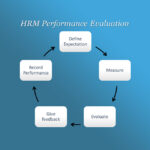1st Controlling Types, Preventive Control (Pre-emptive Control)
Preventive Control (Pre-emptive Control)
Is Preventive Control considered the most important type of administrative controlling types…?
Actually, yes, it is.
So, what features give this type of control preference over the other types? What points of time and levels of system does it function at?
Well … this article will answer!
Prediction in business administration is a significant factor, for it is effective in expecting errors before they occur, what allows suggesting solutions formerly. Subsequently, all activities and operations go ahead almost faultlessly and as close as possible to the plan.

What is Preventive Control…?
Preventive or Pre-emptive Control is a regular systematic and precise inspection of the operations’ inputs in order to predict possible deviations and anticipate potential problems trying to control them before they lead to ensures the quality and feasibility of work.
Preventive Control detects deviations and rectifies them to get work back on the track according to the standards included the company’s plan. In addition, as in the other controlling types, preventive control goes through the same stages; beginning with setting standards to end up with correcting deviations.
Terms of Preventive Control
- Prediction:
It is the cornerstone of preventive control based on. It represents the management’s vision of how operations should be managed depending on a group of selected logical sequences that help to create this vision.
- Rules and Regulations:
A set of procedures is issued at the level of the public administration and its staff, and these rules and regulations must be followed throughout the implementation’s progress as long as the responsible control system provides successful results.
- Data & Information Collecting and Analyzing:
Managers use various techniques to collect data (electronic or manual techniques – reality – face-to-face interviews – lessons learned, team meetings … etc.). Read more When actions take a place, managers begin to collect information based on that data, then compare them to the schedules and budgets, and figure out the deviations that may stick around unless the current situation matches the planned one.
Levels of Preventive Control
- public Administration Level
This level is a set of rules and regulations issued by the public administration. Preventive Control here plays its role of predicting the needed corrections to these rules and regulations.
- Operational Level
The operational level includes inputs, procedures, and policies the company adopts in its projects and works. Preventive control at this level has to predict the possible disruptions that might affect these inputs and policies.
- Strategic level
The strategic level studies the changes in the business environment. Preventive control at this stage predicts these changes and informs the responsible manager about how these changes will affect the goals’ achievement in the long term.
Objectives of Preventive Control
Whether the preventive control controls the planning and the pre-implementation stages or expands to include sub-stages throughout the implementation time, its objectives are still the same:
1- Ensure performance efficiency in compliance with the rules and regulations.
2- Ensure planning and resolution integrity, and make appropriate adjustments whenever needed in order to match the actual performance with the required objective.
Preventive/ Pre-emptive Control is dominant control; heads of this control have the supreme authority in the system of business administration. They control the operations’ progress; they can restrict, immediately interfere, or allow to continue in a manner that guarantees to achieve the company’s goals.
Preventive controls are crucial for maintaining the integrity of an organization’s operations, financial reporting, and compliance with laws and regulations. By preventing issues before they occur, organizations can avoid costly mistakes, reduce the risk of fraud or errors, and maintain their reputation with stakeholders.









